#Tiarella cordifolia
Photo

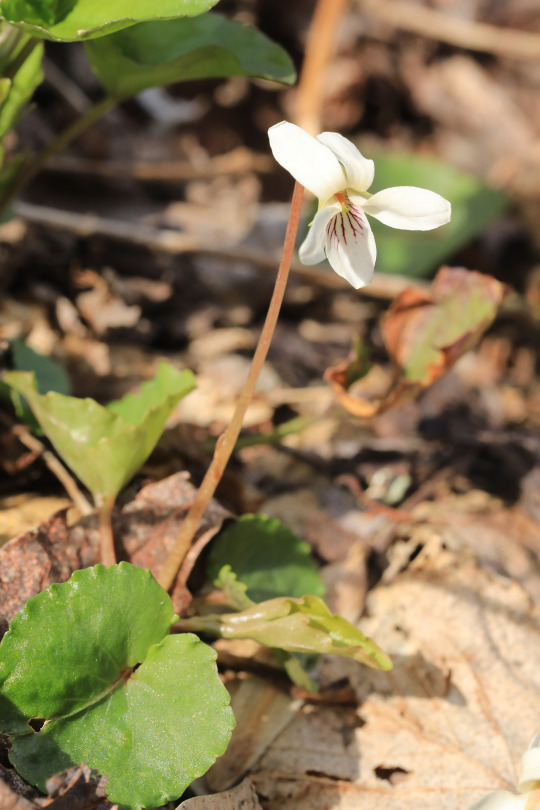
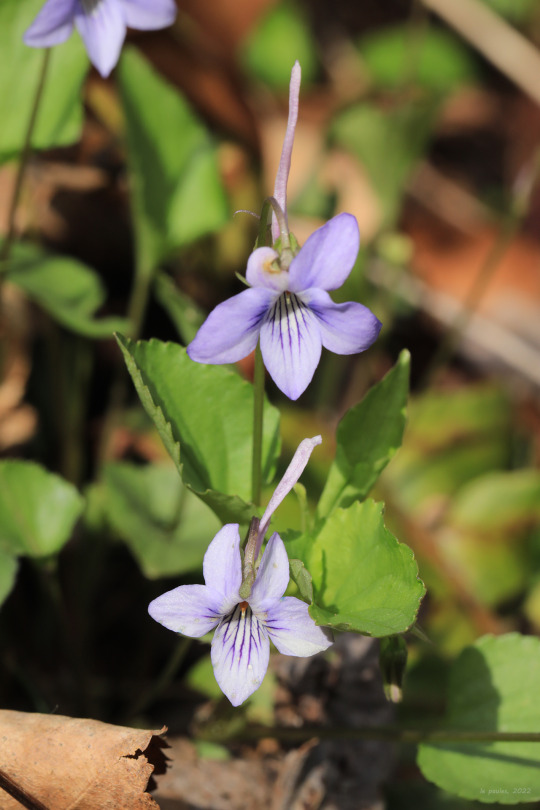
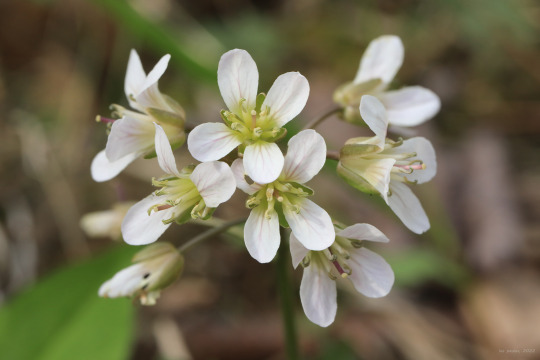
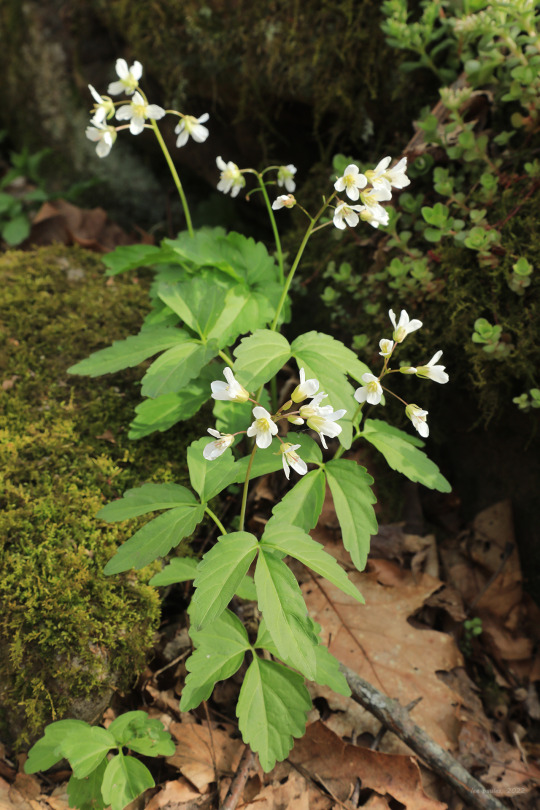


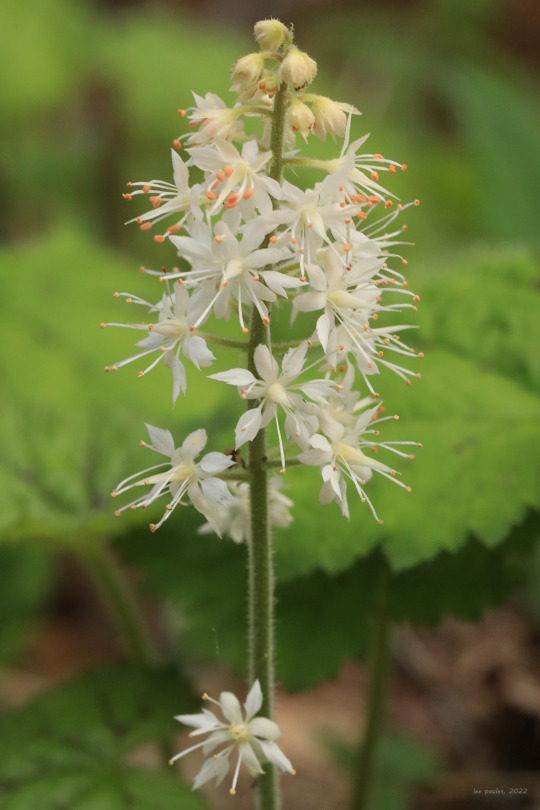
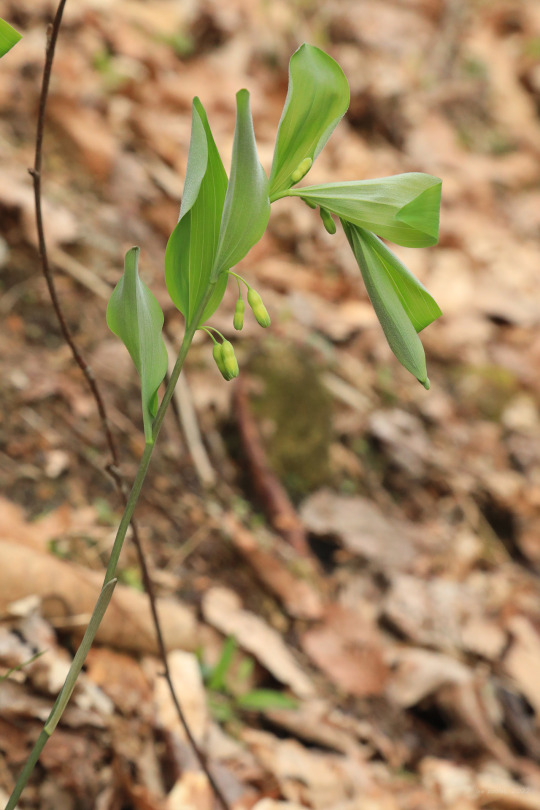
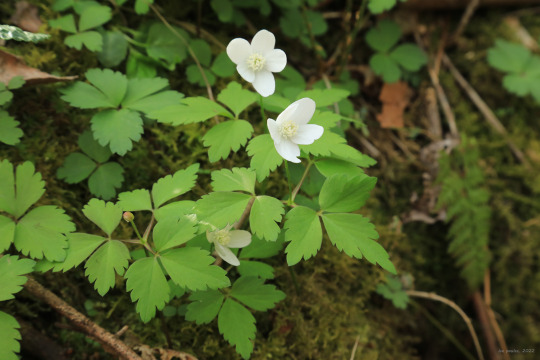
Early May in an Appalachian forest.
From top: sweet white violet (Viola blanda); long-spurred violet (Viola rostrata); broadleaf toothwort (Cardamine diphylla); wake robin (Trillium erectum), also known as red or purple trillium; heartleaf foamflower (Tiarella cordifolia); smooth Solomon’s seal (Polygonatum biflorum); and wood anemone (Anemone quinquefolia), also known as nightcaps.
#appalachia#vandalia#west virginia#spring#flora#wildflowers#viola blanda#sweet white violet#viola rostrata#long-spurred violet#cardamine diphylla#broadleaf toothwort#trillium erectum#wake robin#red trillium#purple trillium#tiarella cordifolia#heartleaf foamflower#polygonatum biflorum#smooth solomon's seal#anemone quinquefolia#wood anemone#nightcaps#coopers rock state forest
1K notes
·
View notes
Text

Tiarella cordifolia / Heart-Leaved Foamflower at the Sarah P. Duke Gardens at Duke University in Durham, NC
#Tiarella cordifolia#Tiarella#Saxifragaceae#Heart-leaved Foamflower#Heart leaved Foamflower#Foamflower#Allegheny Foamflower#False miterwort#Coolwort#Native plants#Native flowers#Plants#Flowers#Nature photography#photographers on tumblr#Sarah P. Duke Gardens#Duke Gardens#Duke University#Durham#Durham NC#North Carolina
8 notes
·
View notes
Text

The foam flower (Tiarella cordifolia) is a perennial plant that prefers moist, well-drained soil and requires partial to full shade. Watering should be consistent, keeping the soil evenly moist but not waterlogged. This plant is native to the eastern United States, including the Appalachian Mountains. Ideal for woodland or rain gardens, this plant will produce the delicate, foam-like flowers of its namesake in late spring to early summer.
#foam flower#tiarella cordifolia#perennial#native plants#woodland#woodland garden#rain garden#horticulture#garden#gardening#my garden
0 notes
Text
Night blooming flowers
Flowers for a vampirekin/nocturnalkin garden.
Alyssum ( Lobularia maritima)
Angel’s trumpet (Brugmansia)
Golden angel’s trumpet (Brugmansia aurea)
Peach angel’s trumpet (Brugmansia versicolor)
Red angel’s trumpet (Brugmansia sanguinea)
Salmon angel’s trumpet (Brugmansia vulcanicola)
Brahma kamal lotus (Saussurea obvallata)
Burning hearts (Heliopsis helianthoides var. scabra)
Cape Jasmine (Gardenia jasminoides)
Casablanca Lily (Lilium ‘Casablanca’)
Chinese quince (Chaenomeles speciosa)
Chocolate daisy (Berlandiera lyrata)
Claret cup (Echinocereus triglochidiatus)
Dame’s rocket (Hesperis matronalis)
Drooping red gum (Eucalyptus parramattensis)
Easter lily cactus (Echinopsis oxygona)
Evening primrose (Oenothera biennis)
Evening rain lily (Zephyranthes drummondii)
Flowering tobacco ( Nicotiana alata)
Foamflower (Tiarella cordifolia)
Four o’clocks (Mirabilis jalapa)
Hoary stock (Matthiola incana)
Japanese wisteria (Wisteria floribunda)
Lotus’ (Nelumbo)
Lungwort (Pulmonaria)
Mock Orange (Philadelphus coronaius)
Moonflower (Datura innoxia)
Moon vine (Ipomoea alba)
Night blooming jasmine (Cestrum nocturnum)
Night blooming water lilies (Nymphaea)
Night gladiolus (Gladiolus tristis)
Night phlox (Zaluzianskya capensis)
Night scented orchid (Epidendrum nocturnum)
Night scented stock (Matthiola longipetala)
Nottingham catchfly (Silene nutans)
Opening Night rose (Rosa x ‘Opening Night’)
Queen of the night (Epiphyllum oxypetalum)
Ten-petal blazing star (Mentzelia decapetala)
Tuberose (Agave amica)
1K notes
·
View notes
Text



‘Spring Symphony’
Foamflower
Tiarella Cordifolia
March 22nd, 2024
16 notes
·
View notes
Text


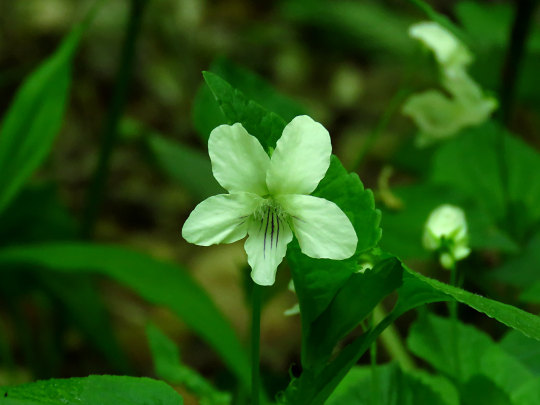
Seen along the Boston Run trail, Cuyahoga Valley National Park, Brecksville, Ohio (2) (3) by fractalv
Via Flickr:
(1) Erigeron philadelphicus (Philadelphia Fleabane)
(2) Tiarella cordifolia — foam-flower
(3) Striped White Violet; Viola striata
5 notes
·
View notes
Text
Harmony in Bloom: Pairing Royal Raindrops Crabapple with Complementary Plants
In the world of landscaping, few trees rival the stunning visual impact of the Royal Raindrops Crabapple. With its vibrant burgundy foliage and abundant blossoms, this ornamental tree can transform any garden into a breathtaking display of color and texture. Today, we explore the art of harmonizing this regal tree with complementary plants to create a garden symphony that resonates with beauty and balance.
Royal Raindrops Crabapple Overview
Before delving into ideal pairings, let's take a moment to appreciate the unique qualities of the Royal Raindrops Crabapple. Known scientifically as Malus 'Royal Raindrops,' this deciduous tree boasts deep red, cutleaf foliage that matures to a rich purple hue. In spring, the tree bursts into a profusion of deep pink to red blossoms, attracting pollinators and turning the garden into a visual spectacle.
Creating Contrast with Evergreens
One effective strategy for enhancing the visual impact of the Royal Raindrops Crabapple is to create contrast with evergreen companions. The year-round greenery of evergreen plants provides a stunning backdrop that allows the striking features of the crabapple to stand out.
Consider pairing your Royal Raindrops Crabapple with low-maintenance evergreens like Boxwoods (Buxus spp.) or Japanese Holly (Ilex crenata). Their glossy green leaves provide a perfect canvas for the Royal Raindrops' burgundy foliage and ensure a vibrant display even in the winter months.
Seasonal Drama with Spring Blooms
To maximize the visual interest throughout the growing season, strategically plant perennials and shrubs that bloom in tandem with the Royal Raindrops Crabapple in spring. This creates a dynamic landscape that evolves with the changing seasons.
Celebrate spring with the delicate blooms of Bleeding Heart (Dicentra spectabilis) or the vibrant hues of Coral Bells (Heuchera spp.). These plants not only complement the crabapple's blossoms but also extend the period of color in your garden.
Understory Planting for Ground-Level Appeal
Enhance the vertical dimension of your garden by incorporating low-growing plants beneath the Royal Raindrops Crabapple. This understory planting not only adds visual interest but also helps in weed suppression and moisture retention.
Opt for groundcovers like Creeping Jenny (Lysimachia nummularia) or Foamflower (Tiarella cordifolia). Their spreading habit and contrasting foliage provide a lush carpet that beautifully contrasts with the crabapple's upright structure.
Fragrance and Texture with Companion Shrubs
Extend the sensory experience in your garden by including fragrant and textural companion shrubs that harmonize with the Royal Raindrops Crabapple. These shrubs add depth and diversity to your planting scheme.
Lilacs (Syringa spp.) or Viburnums (Viburnum spp.) are excellent choices, offering fragrant blooms and appealing textures. Their presence enhances the overall garden ambiance while complementing the Royal Raindrops' majestic appearance.
A Symphony of Colors and Textures with Royal Raindrops Crabapple
In conclusion, the Royal Raindrops Crabapple is not just a tree; it's a centerpiece for creating a symphony of colors and textures in your garden. By carefully selecting complementary plants that span seasons and dimensions, you can elevate the visual appeal of your outdoor space to new heights.

0 notes
Text
8 Best Shade Plants in Utah
8 Best Shade Plants in Utah
Shaded landscapes don’t have to mean zero color or no green at all. In Utah, there are several plants that can add life to your space. Here are 8 shade plants Utah gardeners can try today.
Shade plants Utah
Foamflower
If you need a tough yet attractive green feature in your deck or shade then you should get a foamflower. Tiarella cordifolia comes in red or pink options and gives your area…

View On WordPress
0 notes
Text
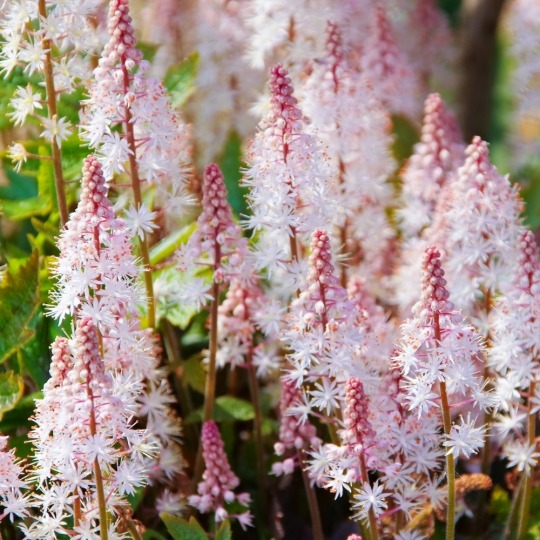
tiarella Pink Skyrocket
#tiarella#tiarella cordifolia#foam flower#foam flowers#pink flowers#white flowers#pink and white flowers#white and pink flowers#pink and white#white and pink#pink aesthetic#flower aesthetic#floral aesthetic#flowers
15 notes
·
View notes
Photo
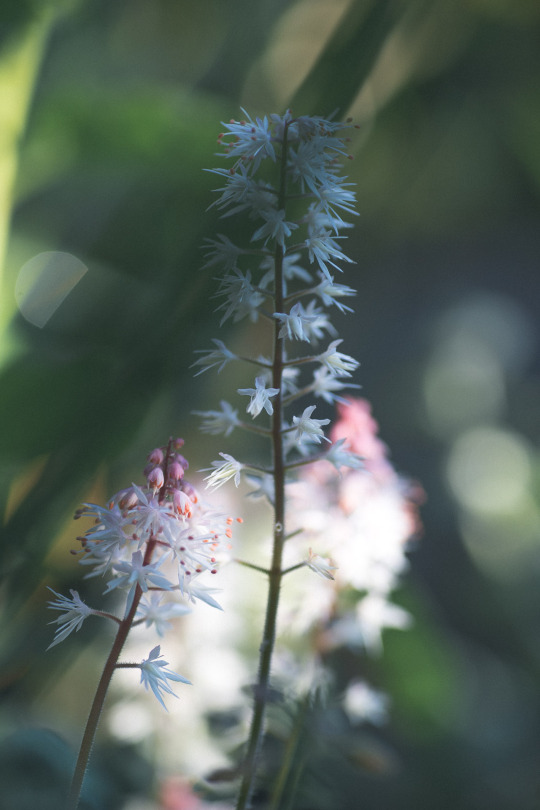
221 notes
·
View notes
Photo



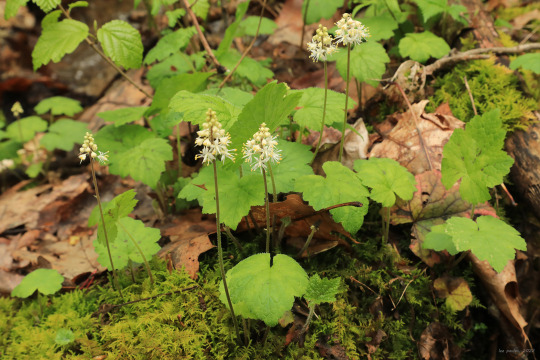

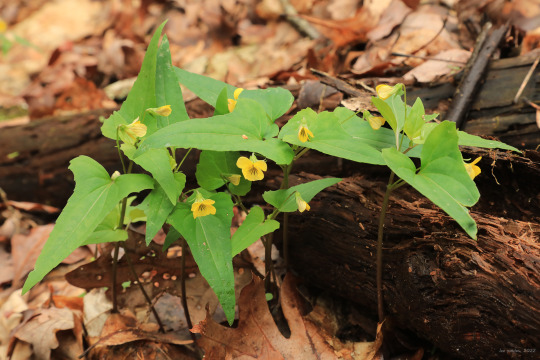
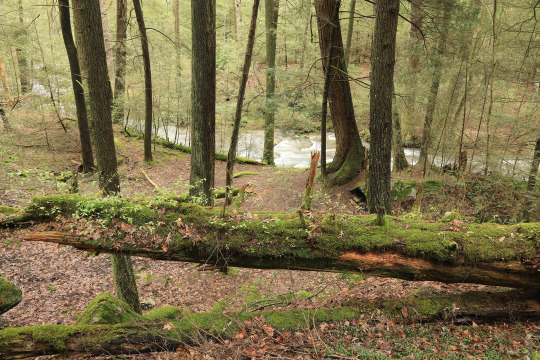

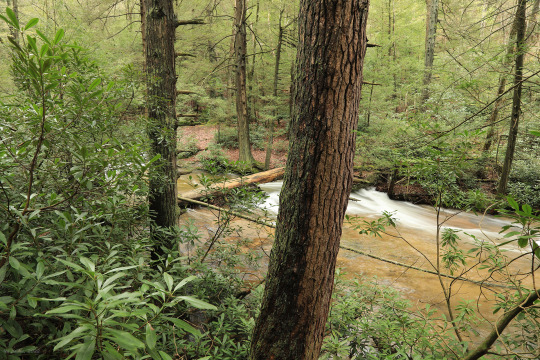

Eastern hemlock (Tsuga Canadensis) is sometimes referred to as the “redwood of the east”, and once-upon-a-time, this was absolutely the case; great expanses of virgin hemlock forest cooled headwater streams and created their own unique ecology. But these old growth forests are largely gone now, with only a few remnant stands scattered along the Appalachian spine. A spring hike through a pristine stand of these gentle giants is an experience to be treasured, providing a rare connection to a primeval world nearly lost to us.
From top: Painted trillium (Trillium undulatum), a lover of old hemlock and spruce forests and the most beautiful and delicate of all the trilliums to bloom in this area; marsh blue violet (Viola cucullata), a moisture-loving violet with club-like hairs at the throat of its flower; heartleaf foamflower (Tiarella cordifolia), which clumps gorgeously at the edges of seeps and brooks; halberd-leaved yellow violet (Viola hastata), an Appalachian endemic with sword-like leaves; and a red eft (Notophthalmus viridescens viridescens) on a perilous journey in search of a pond environment, where it will eventually transform into an adult newt.
#appalachia#vandalia#west virginia#spring#flora#wildflowers#coopers rock state forest#virgin hemlock trail#little laurel run#old growth forest#tsuga canadensis#eastern hemlock#trillium undulatum#painted trillium#painted lady#viola cucullata#marsh blue violet#tiarella cordifolia#heartleaf foamflower#viola hastata#halberd-leaved violet#halberd-leaved yellow violet#notophthalmus viridescens viridescens#eastern newt#red eft
178 notes
·
View notes
Photo


Tiarella cordifolia
Heart Leaf Foamflower
Another Eastern North America mesic forest member of the saxifrage family. In Appalachia this is the star of the stream lining communities and seap communities during the transition from spring to summer; but, it’s not limited to requiring these seaps or streams, rich woodlands and decaying stumps offer enough moisture and nutrients for a foot hold. I suppose some people may argue there favorite var. or microspecies: (T. wherryi byosyn.= T. cordifolia ssbsp. wherryi), T. cordifolia var. cordifolia, and T. cordifolia var. collina.
Though, thats probably going to be a discussion based on how you see these in-situ or in a garden.
As for microspecies denotation: there are current and on going bouts for arguements based on apomictic conjunction in-situ from outcrossing hybrids that evolved in allopatric events and now occur synonymously by aesthetic in populations, meeting or reconverging in sympatry. Stolon conjunction and disconnection is present only in what some people confirm as T. wherryi where apomictic populations persist and form by vivipory mainly instead of seed casting. The issue stems from occasional outcrossing events and imbrications of species in sympatry, almost like a reconverging and settling. (small scale Species cladistics level brading?) Anywho, MOBOT collective does note this issue somewhat and in FNA vol. 8 a foot note was added along time ago about accepted species designation, instead of calling it a microsp or subsp.
“Tiarella wherryi and T. cordifolia have been differentiated primarily on the basis of lack of stolons in T. wherryi. Such plants grow in mixed populations and it has been impossible to differentiate taxa on the basis of herbarium specimens. It is also thought that the differences between the taxa might be a result of altitudinal variation in habitat. Attempts by Lakela to distinguish var. cordifolia and var. austrina on the basis of leaf dimensions and marginal dentation have been thwarted by continuous variation in these characteristics.” - Flora of North America, MOBOT, (VOL. 8)
Any-whom’st’ve this is a stress post, and I should be studying for finals.
#Saxafragaceae#tiarella#tiarella cordifolia#botany#ecology#evolution#plantblr#ohio#wildflowers#nature
22 notes
·
View notes
Photo

This is in one of THE shadiest and THE driest spots in the woodland garden. Pachysandra was attempted a few years back but (fortunately) couldn't take it.
This Tiarella cordifolia while not exactly ruling this tough turf, it is nonetheless holding on.
#my post#gardeners of tumblr#gardeners on tumblr#Tiarella cordifolia#Tiarella#Foamflower#flowers#woodland garden
8 notes
·
View notes
Photo
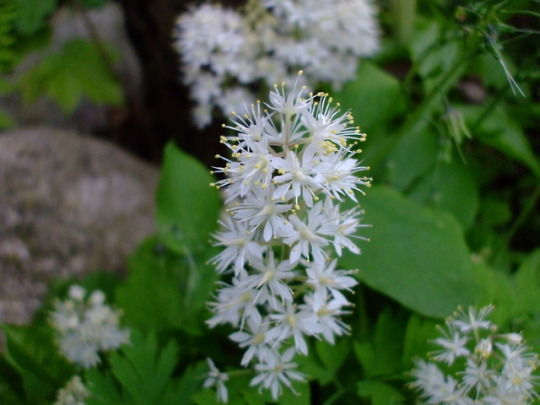
Tiarella cordifolia
Please check out wildflower ebooks: http://lakesideendeavors.com/growwild/
Want wildflower seeds? Check out our Ebay: https://www.ebay.com/usr/lakesideseeds
#Tiarella cordifolia#wildflower#wild flower#wildflowers#wild flowers#flower#flowers#plant#plants#nature#nature photography#photography#gardens#gardening#garden#native#natives#growwild#growild
50 notes
·
View notes
Photo






#poetry#poets on tumblr#original photography#garden#plants#tiarella cordifolia#decrystallization#revelation#melting#be revealed
82 notes
·
View notes
Photo



Tiarella cordifolia - Foamflower
#plant id#native plants#wildflowers#spring#bicolor leaves#variegated leaves#oxalis#foamflower#heartleaf foamflower#tiarella#tiarella cordifolia#flower spike#forest floor
5 notes
·
View notes